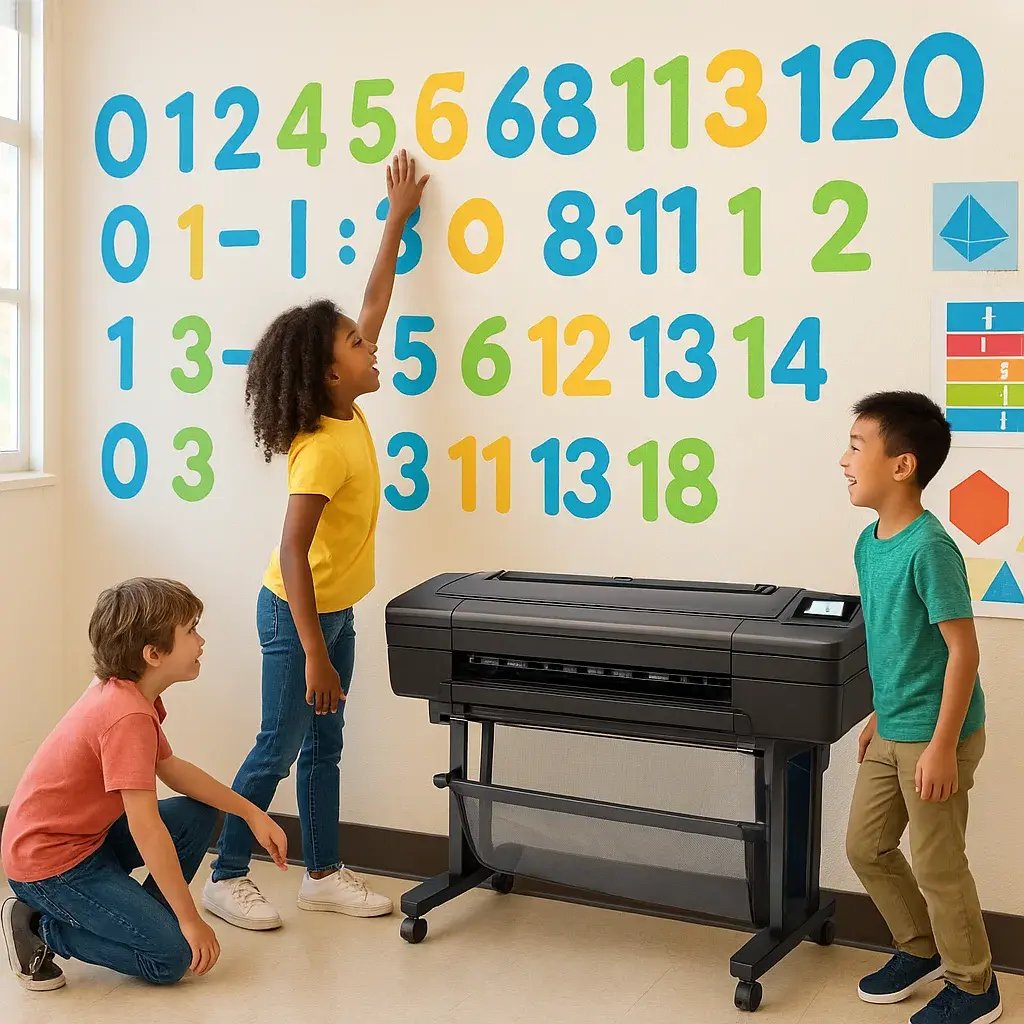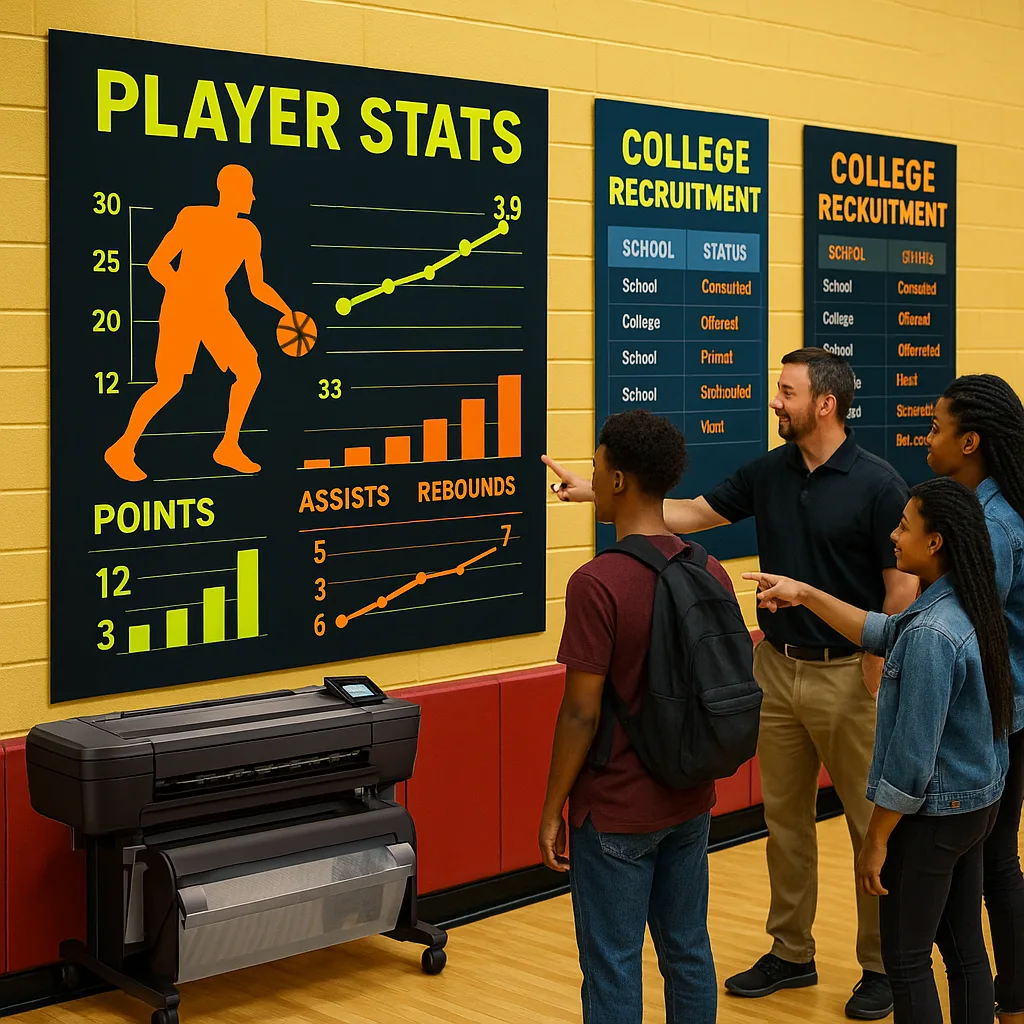
Hey there, fellow school community champions! Let me share something that’s been on my mind lately. Last week, our PTA meeting erupted into quite the debate about our school’s new cell phone policy. Parents were concerned, teachers were frustrated, and students? Well, they felt like nobody was listening. That’s when it hit me – we needed better visual communication, and our trusty poster maker machines for phone policies could be the answer we were looking for.
Why Visual Communication Matters for School Policies
You know that feeling when you’re trying to explain something important, but words just aren’t enough? That’s exactly what happened at Jefferson Elementary when they rolled out their new cell phone guidelines. The administration sent home a three-page document filled with rules and consequences. Guess how many families actually read it? (Spoiler alert: not many!)
But here’s where things got interesting. One creative teacher decided to use their Education Express 24″ Poster Maker Package A to create colorful, engaging visuals that explained the policy in a way that actually resonated with everyone. The difference was night and day!
The Power of Positive Messaging
Instead of focusing on what students can’t do, successful phone policies emphasize what they can do. Think about it – which message would resonate better with your teenager?
“NO PHONES ALLOWED – DETENTION FOR VIOLATORS!”
Or…
“This is a space for face-to-face connections! Let’s talk, laugh, and learn together.”
The second approach acknowledges that we’re not anti-technology; we’re pro-connection. When schools use their poster maker machine for schools to create these positive messages, something magical happens. Students actually start to understand the why behind the rules.

Creating Effective Phone-Free Zone Signage with Poster Maker Machines for Phone Policies
Let me tell you about my friend Sarah, a principal who transformed her school’s approach to phone-free zones. Instead of stern warnings, she used their poster printing equipment to create welcoming signs that celebrated what each space was designed for.
In the library, colorful posters proclaimed: “Welcome to Your Imagination Station! Phones on silent, minds on wonder.” The cafeteria featured bright banners saying: “Lunch & Laughter Zone – Connect with friends, not WiFi!”
These weren’t just pretty signs – they were conversation starters. Students began asking questions, sharing ideas, and even suggesting new poster designs. The visual communication opened doors that policy documents had slammed shut.
Building Buy-In Through Visual Storytelling
Student Perspective
'Why can't I use my phone?'What They Need
Students need to feel heard and understood. Create posters that acknowledge their digital world while showing the benefits of occasional disconnection.Parent Concerns
'How do I reach my child?'Addressing Fears
Parents worry about emergencies. Visual guides showing check-in procedures and emergency protocols ease these concerns beautifully.Teacher Support
'How do we enforce this?'Making It Work
Teachers need clear, consistent messaging. Classroom posters that reinforce positive behaviors make policy enforcement feel supportive, not punitive.Practical Design Tips for Policy Posters
After helping dozens of schools create effective phone policy communications, I’ve learned what works. Here’s my tried-and-true approach:
1. Use Color Psychology
Bright, warm colors like orange and yellow promote positivity and energy. Cool blues and greens create calm, focused environments. When Lincoln High used their poster maker machine for schools to print zone-specific colors (energetic yellows in social areas, calming blues in study zones), students naturally adapted their behavior to match.
2. Keep It Simple
Remember the 3-second rule: if someone can’t understand your message in 3 seconds, it’s too complex. One school created a brilliant series using just emoji-style icons and two-word phrases. “Brain Break!” with a happy brain icon was way more effective than paragraphs of policy text.
3. Make It Interactive
QR codes linking to positive phone-free activities, suggestion boxes for new poster ideas, or “Phone Parking” stations with fun graphics – these interactive elements turn policy enforcement into community building.
Real Success Stories from Our Community
Riverside Elementary’s Transformation
When Riverside invested in an Education Flex 20 Poster Printer Cutter Package A, they didn’t just get equipment – they got a communication revolution. Their PTA created a “Phone-Free and Fancy Free” campaign with whimsical posters featuring students engaged in art, reading, and playground games.
The result? Phone policy compliance jumped from 40% to 85% in just one month. Parents reported their kids were actually excited about the phone-free zones because the posters made them look fun, not restrictive.
Washington Middle’s Student-Led Initiative
This is my favorite story! Washington Middle’s student council used their poster maker machines to create a “Digital Wellness Week” campaign. They designed posters showing the benefits of face-to-face interaction, created “Phone-Free Challenge” certificates, and even made “Tech Timeout” badges.
The student-created visuals had authenticity that no adult-designed poster could match. When peers promote healthy phone habits through creative visuals, the message lands differently.
Implementation Strategies That Actually Work
Here’s what I’ve learned from coordinating with schools across our district: timing and rollout matter just as much as design. When you’re using poster maker machines for phone policies, consider this phased approach:
Phase 1: Build Awareness (2 weeks before policy launch)
Start with teaser posters that spark curiosity. “Something exciting is coming!” or “Get ready for more real connections!” These build anticipation rather than dread.
Phase 2: Explain the Why (1 week before)
Roll out your main messaging posters explaining the benefits. Focus on what students gain, not what they lose. Include statistics about improved focus, better friendships, and reduced anxiety – but make them visually appealing, not preachy.
Phase 3: Launch with Celebration (Policy start date)
Make it an event! Create festive posters, host phone-free activities, and use your poster maker machine for schools to print certificates for early adopters. One school even created a “Phone-Free Hall of Fame” poster featuring students enjoying tech-free activities.
Phase 4: Maintain Momentum (Ongoing)
Regular poster updates keep the message fresh. Monthly themes, seasonal designs, and student spotlights prevent policy fatigue.
Budget-Friendly Tips for Maximum Impact
Not every school has unlimited resources, but that doesn’t mean you can’t create effective visual communications. Here are my favorite money-saving strategies:
Schools save up to 75% by printing in-house versus outsourcing poster creation
Visual policies see 90% better engagement than text-only communications
Start creating impactful policy visuals today
Measuring Success and Adapting Your Approach
One thing I’ve learned from our PTA fundraising efforts is that you can’t improve what you don’t measure. The same goes for phone policy communication. Here’s how successful schools track their visual communication impact:
Student Surveys: Quick QR code surveys on posters asking “Did this message help you understand our phone policy?” give real-time feedback.
Behavior Tracking: Teachers note changes in phone usage patterns after new posters go up. Jefferson Elementary saw a 60% reduction in phone-related disruptions after implementing their visual campaign.
Parent Feedback: At parent-teacher conferences, ask about the visual communications. Are they clear? Helpful? What questions remain?
Iterate and Improve: The beauty of having poster maker machines for phone policies in-house is the ability to quickly update messaging based on feedback. When one design isn’t working, you can have a new approach up within days, not weeks.
Your Next Steps
Creating effective phone policy communication doesn’t happen overnight, but with the right tools and approach, you can transform resistance into understanding. Remember, we’re not fighting against technology – we’re advocating for balance and real human connection.
Start Small:
– Choose one area for a pilot program
– Create 3-5 core message posters
– Gather feedback for 2 weeks
– Refine based on responses
Build Your Team:
– Include student voices
– Partner with art teachers
– Engage parent volunteers
– Collaborate with administration
Invest Wisely:
– Consider equipment that grows with your needs
– Look for packages with training included
– Calculate long-term savings vs. outsourcing
– Apply for technology grants
Keep Learning:
– Join online communities of educators
– Share successes and challenges
– Attend workshops on visual communication
– Stay updated on digital wellness research
Ready to Transform Your School’s Phone Policy Communication?
You’ve got this! With the right visual communication strategy and tools like poster maker machines for phone policies, you can create a school environment where everyone understands and supports healthy technology boundaries. Remember, it’s not about taking something away – it’s about giving our kids something better: real connections, focused learning, and a balanced relationship with technology.







